
Appendix E: Wood decay
Decay (sometimes referred to by homeowners as "rot") is typically found at joints that trap water and dry slowly. Decay occurs only where wood has contact with water, such as trapped rain or condensation of water vapor moving out of the house. The wood then is a food source for the decay fungi. Examples are deck fascia, deck board contact area with joists, stairs, ledger boards of decks, siding joints (vertical and horizontal), bottoms of fence boards in contact with soil, and at corners of and under windows. In each of these photos, the covering has been removed to show the progress of decay.
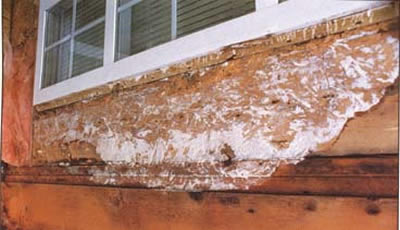
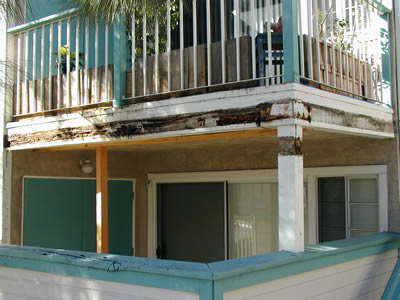
Decayed wood ignites at a lower temperature and burns quicker than sound wood. This is an area at the junction of a deck and siding that had substantial decay. The fire was fortunately put out before the building was consumed.
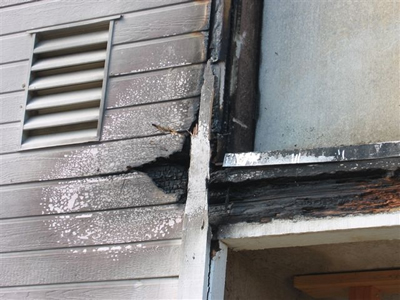
One notable negative effect of sprinklers has been the wetting of the bottom of wood-based siding, leading to decay at these vulnerable places. The photo below is of an apartment complex having grass right up to the building, which is an obvious opportunity for sprinklers to wet the siding.
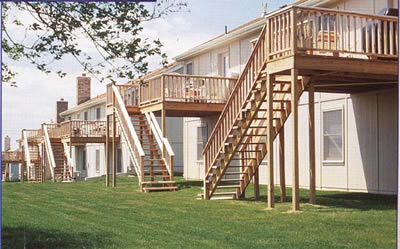
The photo below is an example of a problem seen with wooden windows, where water has wicked up from the corner joint, causing the peeling paint. This is also a good indicator of conditions for decay to occur. Usually decayed wood can be found by probing with a sharp-pointed tool, since decayed wood is softer than normal wood.
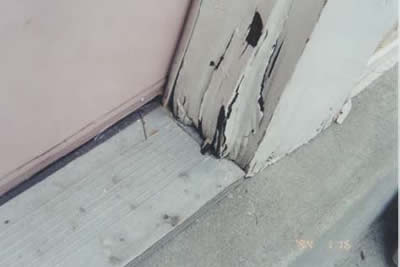
Some of the actions that can be taken to reduce decay are:
- Caulk any visible gaps and seams. Inspect all existing caulking and replace as necessary.
- Clear soil from about 1 inch from the bottom of fences
- Redirect sprinklers away from any wood-based materials
- Use decay-resistant woods
- Minimize areas that can trap water
Where you do find decay, there are some important steps to take:
- First, clean out the decay so that nothing but sound wood remains
- Next, determine if the damage is cosmetic or structural. Typical cosmetic would be window corners and fence bottoms. For decking, where the decay could cause the failure of a deck board or supporting joists, the decision must be made to see if repair is adequate or if the board should be replaced. If you suspect structural damage, get professional advice.
- Then, for cosmetic damage, use a filler to patch the area that had decay, and apply a matching paint coating.
- Lastly, but most importantly, determine the source of water that entered the wood and see if it can be diverted (Be especially aware of gutter or downspout leaks. If you suspect this problem, water your roof to see the flow patterns). This might require the repair (or installation) of flashing.